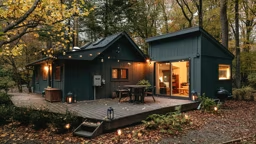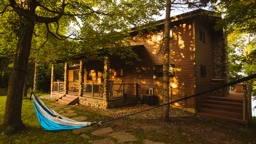
Whether filled with fruit, overflowing with flowers or piled high with pinecones, twig baskets are useful, fun-to-make accents that brim with rustic charm.
And they’re simple to make.
Almost any hardwood twigs will work for the sides of the basket. The fun lies in gathering local materials. Those used here represent a mix from my home woods, including beech, sweet birch, sycamore, oak and maple. Because wood shrinks as it seasons, it’s best to use dry twigs for the uprights. Moisture is a less significant issue where the horizontal twigs are concerned. Less-seasoned twigs will work just fine.
And they’re simple to make.
Almost any hardwood twigs will work for the sides of the basket. The fun lies in gathering local materials. Those used here represent a mix from my home woods, including beech, sweet birch, sycamore, oak and maple. Because wood shrinks as it seasons, it’s best to use dry twigs for the uprights. Moisture is a less significant issue where the horizontal twigs are concerned. Less-seasoned twigs will work just fine.
Tools and Materials
- Edge-glued pine panel, 3/4" thick and at least 11" square
- Hardwood twigs, approximately 3/4" diameter, roughly 22 feet per basket
- Band saw and/or handsaw
- 3/8" tenon cutter or utility knife
- Measuring tape, combination square
- Pencil and scratch awl
- Sandpaper (100-220 grit)
- Polyurethane woodworkers’ glue
- Long nose pliers and/or diagonal cutting pliers
- Tack hammer
- Brads (5/8”, 3/4" and 1" long )
- Choice of finish
- Rust-finished tin craft wire (20-gauge or so), approximately 16 yards per basket. Copper wire and annealed steel craft wire also are suitable.
Instructions
1. Make the base.
Begin by cutting a 3/4" thick laminated pine panel to an 11" square. Using a hand saw or bandsaw, cut off the corners (measure in 31/4" from each corner) to make an octagon.
2. Mark for tenon holes.
With an awl, mark the eight spots where the twig posts will go. These should be 1" in from each corner.
3. Choose your eight twig posts.
Select eight twigs for use as posts. These will form the skeleton of the basket. Choose twigs that are about 8" long and 5/8" in diameter. The lengths of these posts will be trimmed a little later.
4. Cut the tenons.
Using a 3/8" drill-powered tenon cutter or utility knife, cut or whittle a 3/8" diameter, 3/4" long tenon on one end of each twig upright.

5. Drill holes for twig uprights.
Using the drill bit that best fits the tenons you cut is Step #4, drill holes at a 20-degree angle at the awl marks you made in Step #2.
6. Sand the base.
Give the base a light sanding, working from rough to smooth grit sandpaper.
7. Glue the twig posts in place.
Apply a very light coat of polyure-thane glue to the twig tenons and twist them into place. If you’re worried about your twigs staying put, drive a single brad at an angle into the base of the basket and through the tenon.
8. Lay the first row of twigs.
Trim four twigs to length – to approximately 51/4" – for the first row of horizontal twigs. Use rust-finished tin wire to bind these twigs to the posts. Cut your wire into 6-foot lengths and, using the photo below as a guide, fold one around each twig upright so that the ends are of equal length. Lay a twig atop the wire, cross the ends in front of the horizontal twig, bring them up around the post and back to the front, ready for the next twig.

9. Secure with brads.
To further strengthen the basket, fasten the horizontal twigs to the posts and to each other with brads. It’s important to pre-drill for the brads so you don’t split the small, round twigs.
10. Finish laying the twigs.
Move on to the second row and repeat. Continue until your basket walls reach the desired height. Tie off the wire and snip the loose ends. For a basket comprised of eight rows of four twigs, I cut the second and third rows approximately 5 1/2" long; the fourth and fifth 5 3/4"; the sixth and seventh, 6"; and the eighth row 6 1/4".
11. Trim twig uprights.
To create an informal and rustic look, I cut the twig posts at different angles and to slightly different heights.
12. Finish as you see fit.
For a natural finish use a tinted Danish oil. For a cottage-style whitewashed basket, first prime the piece and then follow with a coat of white latex paint.










